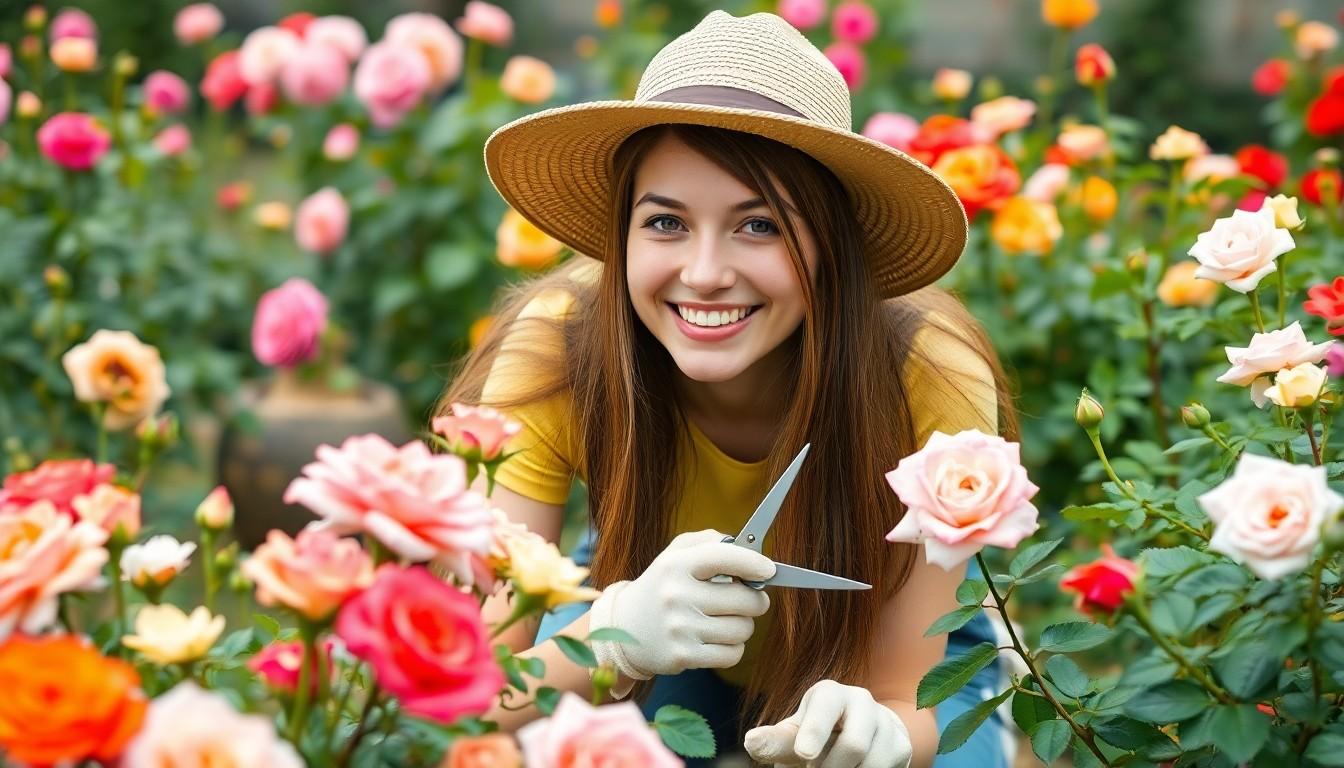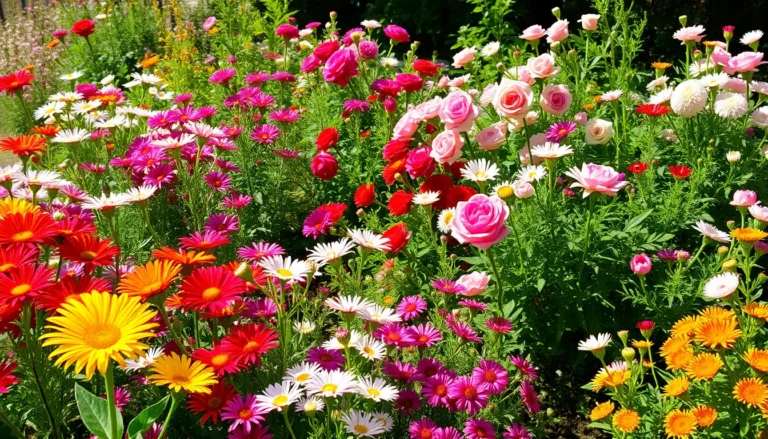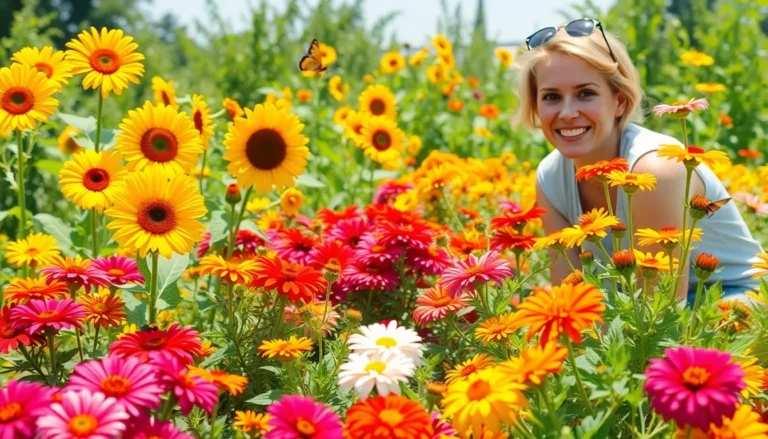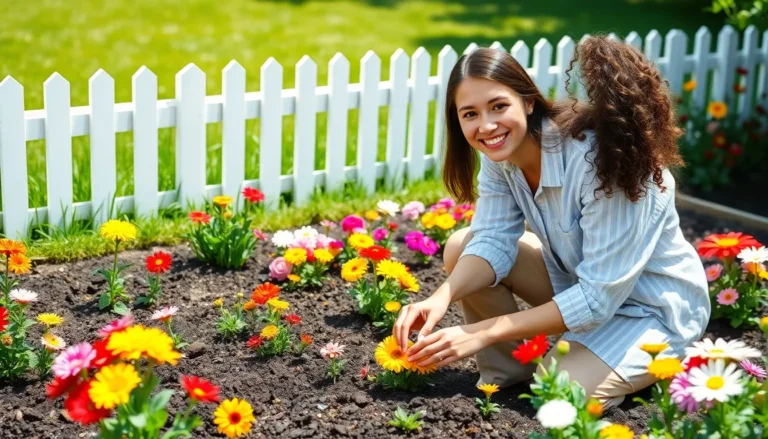There’s something undeniably enchanting about a garden filled with roses. With their vibrant colors and intoxicating fragrances, these blooms have a way of stealing the show. Whether you’re a seasoned gardener or just starting out, cultivating a rose garden can be both a rewarding and amusing adventure. After all, who wouldn’t want to play with thorny plants that promise to bloom into something beautiful?
Overview Of Rose Gardening
Rose gardening involves selecting, planting, and nurturing various types of roses. Enthusiasts appreciate roses for their diverse colors, sizes, and fragrances. Understanding the different species is crucial, as each type has unique care requirements. Hybrid teas, floribundas, and climbers represent just a few categories available to gardeners.
Planting roses thrives in well-drained soil that retains moisture. Choosing a location that receives at least six hours of sunlight each day promotes healthier plants. Roses respond favorably to fertilization, particularly in early spring. Applying a balanced fertilizer enhances growth.
Pest management plays a vital role in maintaining rose health. Aphids and spider mites commonly affect roses, requiring prompt action for control. Using insecticidal soap or neem oil yields effective results against these pests.
Pruning roses supports robust growth and encourages blooming. Cutting back dead or weak branches helps shape the plant and improves air circulation. Timing the pruning correctly ensures a fuller bloom period.
Watering practices contribute significantly to rose gardening success. Providing one to two inches of water per week is beneficial, especially during dry spells. Drip irrigation systems deliver consistent moisture directly to the roots.
Furthermore, seasonal care enhances the longevity of rose plants. Mulching around the base protects roots during winter and helps retain soil moisture. Dividing garden beds can also promote a healthier growth environment.
Selecting companion plants like lavender or daisies enhances overall garden aesthetics and can deter pests. These complementary species support the ecological balance within the garden, fostering a thriving environment for roses.
Types Of Roses
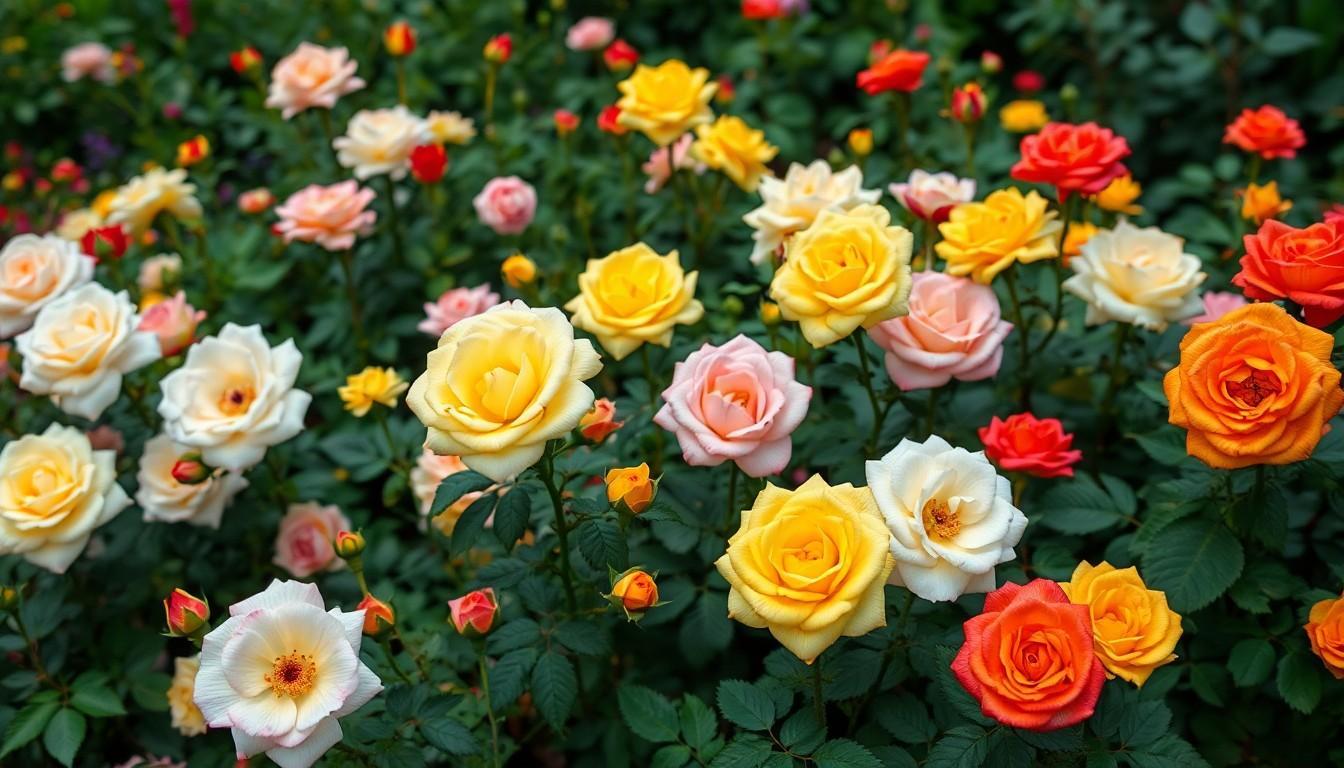
Various rose types cater to different gardening preferences and aesthetics. Understanding each type helps in selecting the best for any garden’s design.
Hybrid Teas
Hybrid teas represent classic elegance in rose gardening. Characterized by long stems and large blooms, these roses offer a stunning focal point. Colors range from soft pastels to vivid hues, allowing for diverse arrangements. Blooming primarily in summer, they require proper pruning to maintain shape. Gardeners often choose hybrid teas for cut flower arrangements due to their impressive size and longevity. They thrive in well-drained soil and need full sun to flourish.
Grandifloras
Grandiflora roses combine the features of hybrid teas and floribundas. Typically tall, they produce clusters of flowers on elongated stems. Color variations include deep reds and bright yellows, enhancing any landscape. These roses bloom continuously throughout the growing season, adding vibrant color. With resistant qualities against diseases, they prove to be a sturdy choice for gardens. Care includes regular fertilization and adequate watering for robust growth.
Floribundas
Floribunda roses enhance gardens with their plentiful blooms. They flower in clusters, providing a cheerful, colorful display. Many gardeners appreciate their low maintenance and adaptability. Sizes vary, accommodating both small and large spaces. These roses bloom from early summer until the first frost, extending the growing season. Pruning after the blooming period encourages healthy growth. Ideal for borders or mass plantings, floribundas create a beautiful garden landscape.
Essential Tools For Rose Gardening
Equipping a rose gardener with the right tools enhances the experience and promotes healthy plants. Essential instruments include pruning shears and soil test kits.
Pruning Shears
Pruning shears play a vital role in maintaining rose plants. These scissors, specifically designed for cutting stems and branches, encourage new growth and prevent diseases. Choosing high-quality shears ensures clean cuts that minimize damage to the plant. Opt for bypass shears, which allow for precise cuts and less stress on the stems. Regularly cleaning shears between cuts helps avoid the spread of pathogens. Keeping blades sharp also improves cutting efficiency, making the pruning process smoother for beginners and experienced gardeners alike.
Soil Test Kits
Soil test kits provide critical information for rose gardening success. These kits measure pH levels, nutrient content, and soil composition. Conducting tests prior to planting helps determine necessary amendments for optimal growth. A balanced pH, typically between 6.0 and 6.8, supports healthy root development. Each kit generally includes instructions for accurate analysis, allowing gardeners to understand their soil’s unique qualities. Following the recommendations based on test results promotes robust rose health and abundant blooms.
Growing Conditions For Roses
Roses thrive under specific conditions that ensure their health and beauty. Understanding sun exposure and soil type is essential for successful rose gardening.
Sunlight Requirements
Roses require at least six hours of direct sunlight each day. Full sun promotes strong growth and vibrant blooms. Morning sunlight is beneficial, as it helps dry dew and reduces fungal diseases. Planting in a spot that receives afternoon shade can protect roses from intense heat during summer. Varieties, such as hybrid teas and floribundas, particularly benefit from abundant light. Observing the garden layout and surrounding trees can help determine ideal placement for maximum sunlight exposure.
Soil Preferences
Well-drained soil is crucial for healthy rose plants. Roses thrive in a slightly acidic to neutral pH range of 6.0 to 7.0. Adding organic matter, like compost or well-rotted manure, enhances soil structure and nutrient content. Sandy loam offers both drainage and nutrients, promoting vigorous root growth. Heavy clay soil may require amendments to improve drainage. Conducting a soil test can reveal necessary adjustments to achieve optimal growing conditions. Maintaining consistent moisture levels further supports healthy development and blooming.
Common Pests And Diseases
Rose gardens face various pests and diseases that can affect plant health and aesthetics. Understanding these threats is essential for effective management.
Aphids
Aphids stand out as common pests in rose gardening. These small insects often cluster on new shoots and flower buds, sucking sap from the plants. They reproduce quickly, leading to infestations that cause curling leaves and stunted growth. Natural predators like ladybugs can help control aphid populations. Applying insecticidal soap or neem oil provides effective treatment options. Regular monitoring spot infestations early, ensuring timely intervention.
Black Spot
Black spot is a prevalent fungal disease that affects roses. Characterized by dark spots on leaves, this disease can lead to premature leaf drop and reduced vigor. Maintaining good air circulation around plants minimizes humidity, which helps prevent outbreaks. Regularly inspecting plants for early signs of black spot is critical for management. Fungicides, specifically those formulated for roses, can treat affected plants effectively. Practicing proper sanitation by removing fallen leaves reduces the disease’s recurrence potential.
Conclusion
Rose gardening offers a unique blend of beauty and satisfaction that can transform any outdoor space. With the right knowledge and tools anyone can cultivate a thriving rose garden. By understanding the specific needs of different rose varieties and implementing effective care techniques gardeners can enjoy vibrant blooms season after season.
Whether it’s through proper soil preparation or pest management the journey of nurturing roses is rewarding. Embracing the challenges and joys of rose gardening not only enhances one’s gardening skills but also creates a stunning landscape that delights the senses. Each bloom tells a story of dedication and passion making rose gardening an enriching experience for all.

